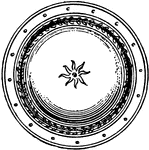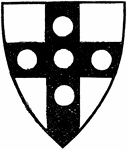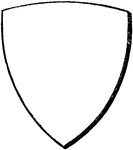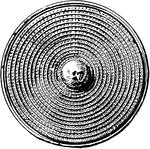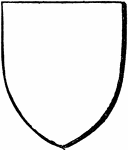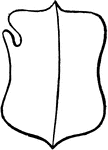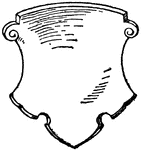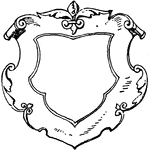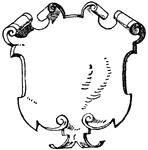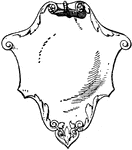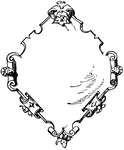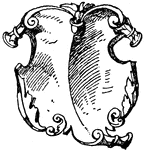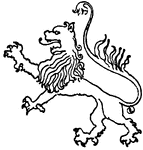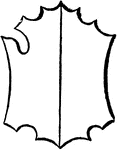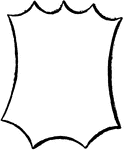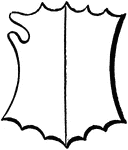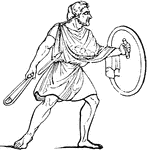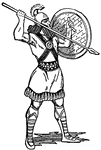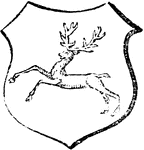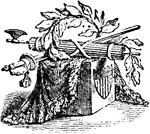
Shield Semée
"When several charges appear in one shield, the number in each row is generally indicated - as, 'three,…
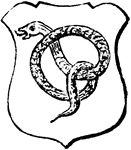
Serpent Nowed Proper
"Argent, a serpent nowed proper. NOWED. This word signifies tied or knotted, and is applied to serpents,…
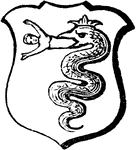
Serpent Vorant
"Argent, a serpent crowned, or, vorant a (person). VORANT. Swallowing or devouring: any animal, in a…

Shake-Fork
"In heraldry, a bearing resembling the pall (Y-shaped), but not reaching the edges of the escutcheon:…
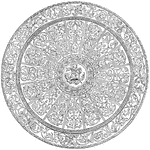
Shield
This shield is made out of iron. It is cut in fanciful technique and inlaid with gold and silver.

Construction Of Shield's Anti-friction Curve
An illustration showing how to construct Shield's anti-friction curve. "R represents the radius of the…
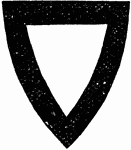
Bordure of Border Shield
"The Bordure of Border surrounds the field, and generally covers one-fifth of the shield."—Aveling,…
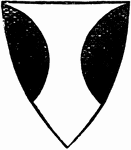
Flanch Shield
"The Flanch is formed of a segment of a circle placed on the side of the shield. It is always borne…
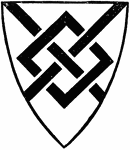
Frette Shield
"The Frette is composed of a Bendlet and Scarp and a Mascle interlacing each other."—Aveling,…
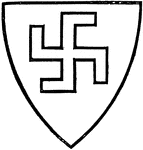
Fylot Shield
"A description of cross, with the ends or extremities bent at right angles."—Avelin, 1891
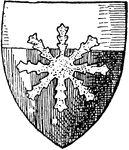
Heater shield
"The best known heraldic shield is that called the heater-shaped, a type common during the thirteenth…
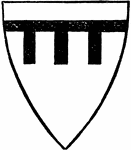
Label Shield
"The Label is a Closet of Barrulet placed on the upper part of the field, and having three of more pendents…
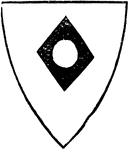
Rustre Shield
"The Rustre differs from the mascle in that the perforation of the device is circular and not throughout."—Aveling,…
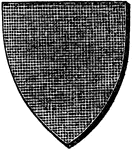
Sable Shield
A heraldic shield with a black surface, which is shown by the crossing horizontal and vertical lines.

Shield-Budding
"The simplest and most generally practised form of budding is that called Shield budding or T-budding.…
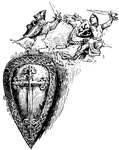
Medieval Shields from the 13th and 14th Centuries
Illustration including one large shield from the first half of the 13th century, bearing a decorative…

Fallen soldier
"Figure of a fallen warrior, represented among the sculptures now at Munich, belonging to the temple…

Greek soldier
"The early Greeks used a very short sword, as may be seen from the preceding cut. The ancient Homeric…
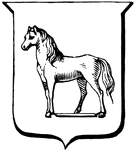
Spancelling of a Horse
"...hobbled or fettered to a clog; said of a horse. When the bearing is properly depicted, a fore and…
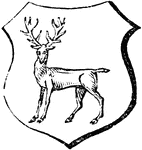
Stag at Gaze
"Argent, a stag at gaze proper. GAZE. An intent look. This is said of a deer standing still, and turning…
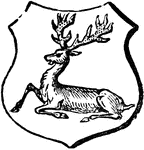
Stag Attired
"Argent, a stag lodged, proper, attired, or. ATTIRED. When the horns of a stag are of a different tincture…
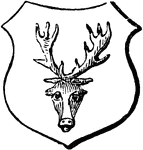
Stag Caboshed
"Argent, a stag's head caboshed, proper. CABOCHED or CABOSHED. Beasts' heads borne without any part…
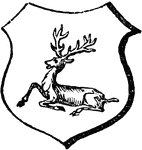
Stag Lodged
"LODGED. A stag sitting on the ground with its head erect, is said to be lodged." -Hall, 1862
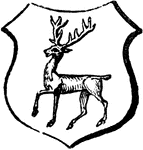
Stag Tripping
"Argent, a stag proper, tripping. TRIPPING. The motion of deer, between running and walking." -Hall,…
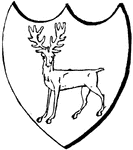
Statant Guardant
Hart at Gaze. The deer standing at gaze (facing the viewer) shows the statant guardant attitude of a…
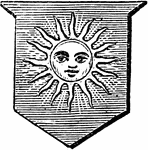
Sun in its Splendor
"Azure, a sun in its splendour. SOL, or THE SUN IN ITS SPLENDOUR. The sun is said to be in its splendour…
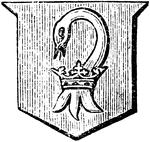
Swan Gorged
"A swan's head erased at the neck, ducally gorged or. GORGED. Any animals, particularly birds, that…
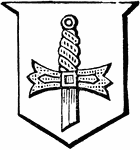
Sword Hilted
"Argent, a sword proper couped, hilted or. HILTED. The handle of a sword tinctured." -Hall, 1862
